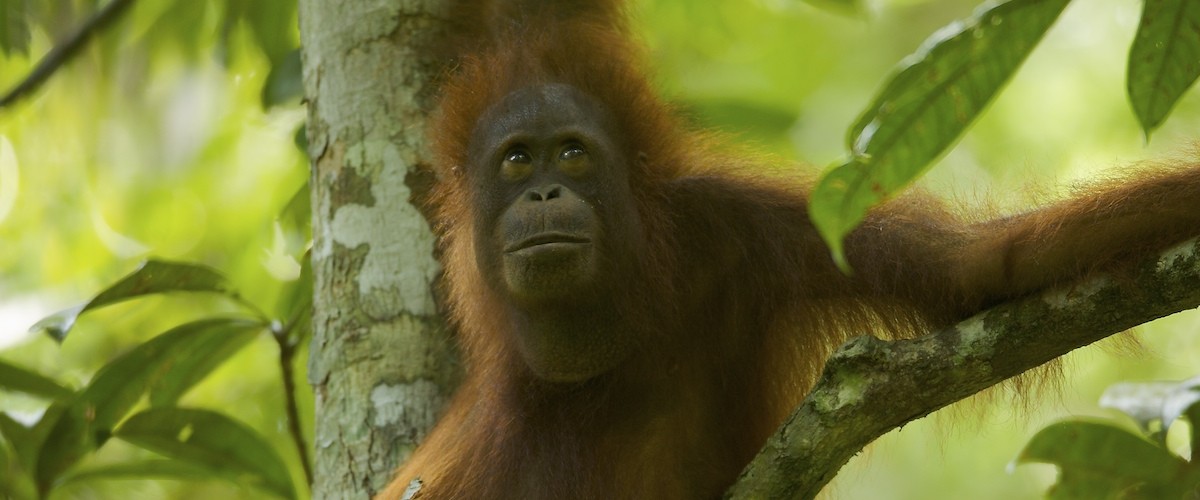By Ranti Naruri, Sustainable Livelihoods Manager
GPOCP/Yayasan Palung supports nine Sustainable Livelihood groups in the Kayong Utara Regency, surrounding Gunung Palung National Park. We motivate people to transition to forest friendly livelihoods, such as creating traditional handicrafts, organic farming and aquaculture. Handicraft artisans use weaving techniques to create tikar mats, baskets, bracelets and more.
A newer method in the region, which is environmentally friendly, and has a relatively high sale value, is called “ecoprint”, which dyes fabrics beautiful colors produced from natural materials. Together with Ibu Chatarina Kusuma Wardhani from Deara Ecoprint, we held a training for weaving artisans in Sukadana District and Simpang Hilir District. This training workshop was carried out over two days, from October 12th-13th at the Bentangor Environmental Education Center in Pampang Harapan Village, and was attended by 16 handicraft artisans.

of ecoprinting to a group of handicraft artisans.
Ecoprints can be made two ways. One technique is called pounding, which is the simpler method. Leaves and flowers are artistically arranged on a fabric (in this case, a large cloth or t-shirt), and then pounded with a small hammer over the surface of the entire plant material. The plant dyes are extracted from the leaves and flowers, and transferred on to the fabric. For the pounding method, plants which contain high levels of tannins (a plant compound that is bitter tasting but can contain rich colors) work the best. After drying in the sun for a few days, this stain becomes permanent.

The second technique is to steam the plants and fabric together, in a standard kitchen steaming pot. This process is more complicated, as it requires several steps. First is scouring, the process of removing any excess debris from the fabric in the form of oil, wax or dirt. Scouring is done using a sulfated castor oil solution (TRO) or a natural detergent. Next, a mordant or special natural chemical is used as a color reinforcement, which will make the ecoprint more durable, and not fade. The mordant is a fixative to help form a chemical bridge between the natural dye and the fabric fibers. After this process, the next step is to prepare the ecoprint with materials such as leaves and flowers, that will be used to transfer colors to the fabric. This is done over a base of plastic, laid beneath the cloth where the plants are placed. All three layers get rolled up together and bound with rope to prepare for steaming. Then the steaming process is carried out for two hours. After steaming, the cloth is unrolled and left to dry.

This training workshop specifically aimed to introduce natural dyeing methods to this group of handicraft artisans so that they will be able to combine ecoprint fabrics with products they weave from Pandanus leaf, such as bags, wallets, pencil cases, and tissue boxes. Because these artisans live close to the Gunung Palung National Park area, they will have access to a wide variety of natural raw materials. Ecoprinting is in line with our conservation and environmentally friendly principles, as materials are sustainably sourced and all the products used are natural.
We are grateful that Ibu Chatarina took the time to pass on her knowledge of this unique craft and excited to see what new prodcut designs the Sustainable Livelihoods artisans will come up with!







